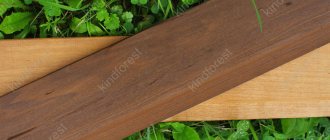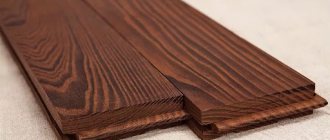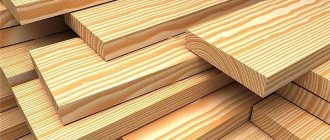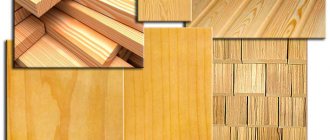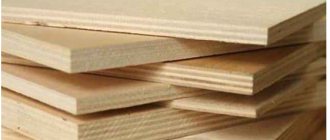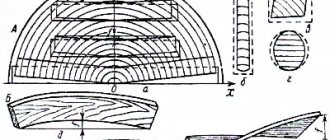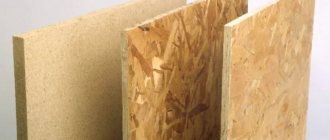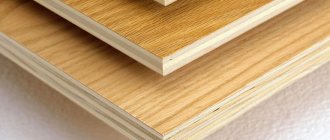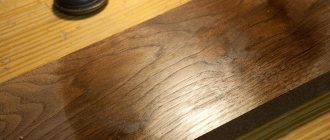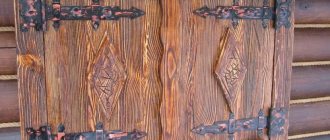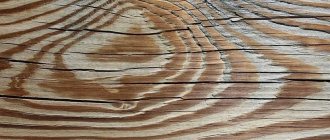There are a lot of offers on the market of construction and finishing materials for every taste, color, budget and area of application. If a person does not want to save money, but plans to make repairs once and forget, then you need to select durable and wear-resistant materials.
One of these is thermowood. Therefore, today we’ll talk about its features, the technological cycle of transforming a workpiece into a product, as well as its advantages and scope of application.
Sit back, it will be interesting.
What is thermotree
Wood has always been a popular material for construction and renovation. Man has been tarring logs for a long time, soaking them and burning them, but the scientific approach was lacking. But in the middle of the last century, a number of European scientists (Stamm, Hansen, Kollman, Schneider) created a “hardened tree” (as they called it). The essence of hardening was to treat the board at high temperatures under pressure in a sealed container. Oxygen was not supplied there to prevent the possibility of fire.
Thermal lining made of thermal aspen in two shades from Dobry Les
Different types of wood are used as blanks (pine, aspen, ash, birch), each of which differs in natural characteristics and appearance. For flooring, for example, thermo-ash is perfect due to its increased wear resistance. Thermo birch or thermo aspen are suitable for wall decoration.
Heat treatment technology
There are German and American wood heat treatment technologies on the market, but Finnish ones have become more widespread. We described its essence above.
Technological cycle:
- The workpiece is placed in a sealed container.
- It is supplied with high temperatures at constant pressure (single-stage). If water vapor is also pumped into the container, then this is a multi-stage treatment. In some cases, instead of steam, inert gas is supplied at a pressure of 1.6 Bar.
- Excess moisture and polysaccharides, which stimulate wood rotting, are removed from wood fibers.
- Upon completion of the procedure, the temperature is normalized and the board cools down.
All stages of thermal board production are shown in this video:
The result is an external resemblance to wood, but in terms of mechanical, physical and aesthetic parameters it is a completely different material. At the dawn of heat treatment of wood, chemical reagents were used to enhance the properties of the workpieces. Scientists succeeded, but under UV rays substances harmful to humans were released. Therefore, nothing but steam is currently used.
By adjusting the temperature regime, you can control the quality of the board and its appearance. There are three classes of thermowood:
- The first is that temperatures up to 190 ℃ easily change the natural shade of the workpiece; the improvement in properties is also minimal.
- Secondly, temperatures up to 210 ℃ increase the strength and resistance of the material to rotting; it acquires a darker shade.
- Third - temperatures up to 240 ℃ maximize the density, strength and hardness of wood fibers, the shade becomes dark and rich.
The shade of the thermowood is the same throughout the entire depth of the board
At the same time, the shade of the wood is even throughout the entire depth of the board. If the top layer wears off over time, simple sanding will return the flooring to its original appearance.
How to burn wood yourself
Processing wood at home, in principle, does not present any big problems, especially if you adhere to certain requirements and choose the right firing method. We invite you to familiarize yourself with some of the nuances of firing lumber.
Doing your own heat treatment of natural wood is not so difficult
Choosing a wood type
Almost any type of wood is suitable for heat treatment, but true admirers of beauty prefer to use lumber with an unusual and expressive texture. For burning wood using the original Japanese technology, only cedar was used. An equally interesting effect is achieved when burning beech and hornbeam, since due to the significant density of these wood species, only the top layer burns out. In poplar, alder and maple, after decorative processing of the wood with fire, a clearly defined texture appears, and in larch and walnut, additional small and unique patterns appear. Those who like to take a steam bath in a sauna will appreciate burnt birch boards, since after treatment its surface becomes more porous and after heating it does not burn the skin.
Larch after firing
Preparing wood for heat treatment
Lumber must undergo thorough preparation before annealing. The surface of the wood must be clean, smooth and dry. The humidity level should not exceed 13-15%, otherwise, when exposed to high temperatures, various surface defects may occur, and this will significantly deteriorate the quality of the decorative finish. Also, the material had to be completely cleaned of even the slightest traces of paint and varnish materials, since after heat treatment they would appear in the form of spots.
Before firing, the wood must be well cleaned of dirt and old finishes.
For your information! It is best to use freshly processed wood for heat treatment, which has not yet had time to change its texture and color. If this condition is not met, grinding work will have to be carried out again.
Burning wood with a blowtorch
If you decide to process the wood with a blowtorch, you should wait until the nozzle of the device turns red and the fire becomes evenly purple. In order for the wood to be fired to meet all standards, the flame must be directed perpendicular to the board, and the end of the torch should barely touch the material being processed. The lit lamp must be moved slowly at the same speed, not forgetting the contrast of the wood pattern that appears. When the fired boards are installed, they must be treated with drying oil, nitro- or urea-formaldehyde varnishes.
Wood treated with a blowtorch is best used for interior work.
Burning wood with a gas torch
Using a gas burner, only light heat treatment of natural wood is performed. This is due to the fact that when burning the material deeply it is not possible to achieve uniformity. During operation, the wood burner should only lightly contact the flame with the processed lumber. The speed of movement of the gas burner should be the same as when painting with a brush. The depth of wood processing is controlled by the degree of change in the contrast of the pattern.
Processing wood with a gas burner
After firing the parts, their surfaces must be moistened with a spray bottle. The length of time between fire treatment and spraying should be the same for all sections of wood. When the burnt wood has cooled, soot is removed from it using special brushes made of brass wire. Additionally, you can perform artificial aging or brushing.
Antique wood burning
Does burnt wood need additional protection?
After removing the carbon deposits and sanding the burnt wood, they begin to fasten it or further process it. Experts recommend treating lumber after firing with oil. At least 2 layers of nitrocellulose varnish with artificial wax should be applied to the fired board. To coat lumber that will be used for finishing the facade, you should use only synthetic wax dissolved in turpentine at a temperature of 40-45°C. This is due to the fact that natural wax does not lose its stickiness.
After additional impregnation, the wood texture appears more clearly
Advantages (properties) of heat-treated boards
- Resistance to the environment - the structure of the wood becomes denser and the fibers stop absorbing water. If the board is left in water for a long time, it will accumulate no more than 8% water by weight. Thermal wood tolerates rain, snow and fog calmly.
- Resistance to pests – insects and microorganisms are not interested in thermal boards.
- Dimensional stability - over time, simple lining can become deformed, that is, crack or dry out, play. Thermowood has no such drawback.
- Strength – even naturally soft wood species after heat treatment become more durable and resistant to mechanical stress. There are no dents or scratches left on the surface of modified boards.
- Safety - thermowood is low flammable, and under UV rays it does not emit chemicals harmful to humans.
- Attractive appearance - due to heat treatment, the wood grain looks clearer, the shade of the boards becomes more uniform and rich.
- Durability - due to the absence of monosaccharides, thermowood does not rot and is not of interest to pests. The service life after treatment is 35-50 years.
Types of thermowood
Application area
Thermowood is a universal material for the construction of external structures, façade cladding, interior work, and landscaping of local areas. Let's consider each option in more detail.
Thermal board facade
This is heat-treated planken, imitation timber or lining. The facade lined with them does not require maintenance during operation, looks attractive, and does not dry out over time, the presence of rot is excluded.
Facade made of imitation thermo-ash timber
Terraces, verandas and gazebos
Thermal board is resistant to precipitation and microorganisms, temperature changes, which is especially noticeable for unheated buildings outside. If this is a floor covering, then the boards will not dry out and will not move. There is also no need to seal and repaint the floor every season.
Thermal aspen decking board
Wet areas
Thermal wood does not heat up in baths, saunas and bathrooms due to its low thermal conductivity, so shelves made from thermal boards will not burn the skin. Resistance to moisture and high air humidity significantly extends the service life of heat-treated boards.
Shelves and lining for a steam room made of thermoaspen from
Garden paths made of thermowood
Paths in the local area speed up movement, make it more convenient and functional, and also improve aesthetics. Thermowood is not afraid of increased loads and pressure, precipitation and moisture, and temperature changes. The environmental friendliness of the technological process prevents the release of chemical compounds under the rays of the Sun.
Thermal aspen garden path
Foundation preparation
An hour of renting a truck crane in Moscow costs from 1,200 rubles, so after delivery it is better to immediately place the metal structure in the place of intended use. To do this, it is necessary to prepare the foundation taking into account the following factors:
- relief of the site;
- GWL level;
- soil type;
- snow and wind loads.
On flat terrain and gravel, coarse sand and rocky soil, a garden house can be placed without a foundation, on a crushed stone bed compacted with a vibrating plate. With a low groundwater level on a flat area, the dacha is usually supported by pillars made of reinforced concrete or solid wall blocks.
Screw piles have no restrictions on geological conditions and terrain. For a 20-foot container, 6 piles with a load-bearing capacity of 1.5 tons each are sufficient. The most convenient option for such a home is considered to be a foundation with a plinth and technical underground.
Communications must be brought into the area before installation, and a hatch must be cut into the metal floors to connect them.
Caring for thermowood
During its service life, thermowood remains resistant to moisture, temperature changes, pests, and aggressive environments, but UV rays are noticeable for boards. Under their influence, the top layer of the boards fades and turns gray. Over a year, under UV rays, the board fades by 0.05-0.1 mm, while the structure remains the same, as well as the strength characteristics.
The first option is periodic sanding, since the inside of the board has the same shade as on the front side. However, it will not be possible to endlessly chip away the top layer, so it is easier to use natural protective teak oil intended for thermal boards.
BIOFA teak oil is well suited for protecting thermal boards from UV
The composition of natural ingredients is applied with a brush to the front side of the thermal board along the fibers. The first layer is applied with teak oil, the second - the composition for operating conditions (for external or internal work). The frequency of painting depends on the operating conditions and the amount of sun hitting the board.
The composition does not form a protective film on the surface of the thermowood, which will wear out or crack over time; on the contrary, it is absorbed into the board and protects it.
Thermowood painting and surface treatment
It is painted in the same way as regular wood. Low resin content prevents defects on painted surfaces due to resin release. Surface treatment of thermowood must be carried out strictly according to the instructions of the manufacturers of the applied compositions and mixtures. Paint and other compounds are best applied to the smooth surface of planed material with a brush. Oil compositions are applied in the same way as on ordinary wood. And when applying aqueous solutions, you need to remember that the material does not absorb moisture well. Paint and varnish compositions that dry under ultraviolet light are perfectly applied.
Where can I buy
Thermowood is a universal material for construction and finishing. It is only gaining popularity in Russia and the CIS. There are few domestic manufacturing companies, but there are some. creates a thermotree in the Vologda region. There is delivery throughout Russia through cooperation with transport companies. If a client has doubts about the quality of a material when purchasing online, he fills out a request for a free sample, and then decides on further cooperation.
Thermal board wholesale from
Thermally modified wood or TMD
Heat treatment of wood has attracted the interest of researchers since the 30s of the last century. German scientists were the first to study this topic, followed by American scientists in the 40s. In the last few years, research in this area has been carried out in France, the Netherlands, Finland, Germany, Italy and even Russia. Ultimately, experts came to the conclusion that as a result of exposure to temperatures of 180-220 degrees, as well as superheated water vapor, ordinary wood is transformed into a completely new product from a technological point of view of much higher quality - structured and hydrothermally treated wood.
Lumber began to be produced using this technology on an industrial scale about ten years ago. At the moment, the annual production volumes of heat-treated lumber reach 150 thousand cubic meters, its main supplier is Finland. By the way, this material gained particular popularity after chemical wood processing was banned in Europe.
